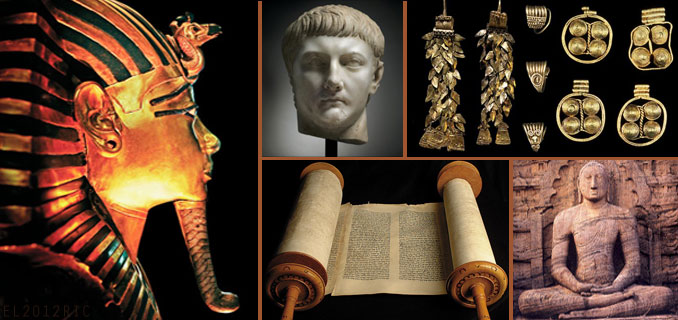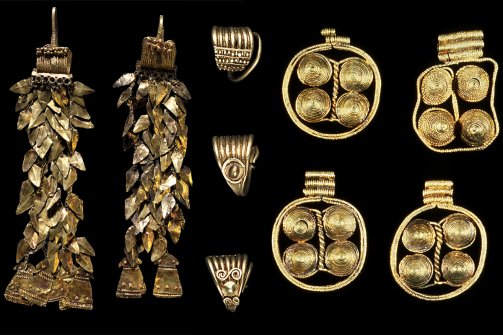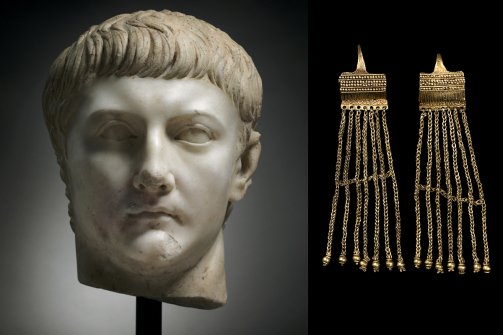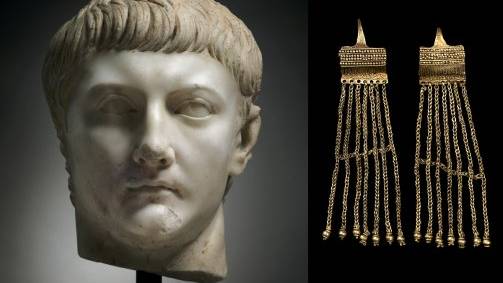Who Owns Antiquity?
Source: thedailybeast.com

In 1966, curators at the archaeological museum of the University of Pennsylvania bought a pile of gorgeous Bronze Age jewelry from a Philadelphia dealer. They couldn’t know their purchase would change how museums work.
The 24 gold objects had come to Penn with no trace of where they’d been unearthed, or how. That left scholars there without much clue about why and when the gold had been worked, or by whom— and with the suspicion that it had been dug up by looters. Frustrated, they decided to take steps to prevent this kind of “homelessness” for other antiquities. In 1970, they issued a declaration (a Philadelphia tradition, after all) insisting that the Penn museum would no longer acquire ancient objects whose history could not be properly tracked. Later that year, a UNESCO convention on cultural property suggested the same rule for all other museums, and since then, reputable institutions have pretty much toed that line.
Last week, Penn brought things full circle by announcing that it was more or less undoing the 1966 acquisition that had helped raise the issue. Thanks to a new agreement hammered out with the Turkish Ministry of Culture and Tourism, Penn’s so-called Trojan Gold will be sent to Turkey on indefinite loan, to live in a new museum planned for a site near Troy itself. (Chemical analysis of a speck of dirt lodged in the 4,400-year-old jewelry now hints that, just as scholars had long guessed, it once came from Trojan lands—although long before Homer’s war there.) In exchange, Penn’s museum will get to host shows built on loans from great Turkish excavations, and its archaeologists will continue to have privileged access to those digs.
“We’re not just a museum that shows objects made in other countries,” says Brian Rose, a Penn archaeologist involved in the negotiations. The museum is dedicated to the “archaeological narratives” that go with such objects, Rose says, and those will run deeper with the gold’s “repatriation” to Troy. “Every archaeologist would like to see the material taken from a particular site, or excavated from that site, displayed near that site,” Rose says. “I certainly value the context of an object as one of the most important components of that object.” He explains that Penn also wanted to “make a strong statement about looting and cultural preservation”—as per its long-ago declaration—and above all wanted to cement the museum’s close collaboration with Turkey. That was the real issue at the heart of the decision, according to Rose. “Archaeologists have to be diplomats as much as they have to know the archaeology of the ancient world, because there’s a political dimension to everything we do now.”

A variety of Bronze Age earrings from Penn’s “Trojan Gold.”
That political dimension, and the extreme caution it breeds, is precisely what some players are pushing against. Three weeks ago, the Cleveland Museum of Art announced that it had bought a wonderful head of Drusus Minor, the bloodthirsty son of the Roman emperor Tiberius. (Tiberius was the “Caesar” whom Christ wanted us to “render unto.”) David Franklin, the museum’s director, calls it “a strong and stunning object” that will now rank among the CMA’s top 50 treasures. The thing is—and Franklin says he knew this would make waves—the 2,000-year-old marble head didn’t come with a slam-dunk paper trail proving that it could not have been illegally unearthed since the time of the UNESCO convention. The French owners who first put the Drusus head on the market, in 2004, bore witness to a family tradition that it had come with them from Algeria in 1960, and that they’d already owned it for almost a century by then. Franklin felt this oral history gave him enough to run with: “We did as much if not more than anyone could have done to research this object ... If all the arrows are pointing in one direction, you can make a reasoned assumption,” he says. The inevitable risks that this assumption might turn out wrong are balanced, he feels, by the open access that scholars and visitors now have to this wonderful work of art. “These objects were not created as antiquities”—as evidence, that is, for use by modern historians—“they were created as art. The artists themselves created these objects to be admired.” He also points to the long-term protection the Drusus head will now get, as it never would out on the open market passing from collector to collector. (Its tiny traces of original colored paint might be especially at risk.) “These things are fragile, and they should last forever—as they might in a museum,” Franklin says. He argues, only half in jest, for a bill of rights for works of art, built around what they might need to survive and prosper.
[...]

Read the full article at: thedailybeast.com
Indy Knows Where Antiquities Belong:
Tune into Red Ice Radio:
Robert Bauval - Post-Revolution Egypt
Robert Temple & Olivia Temple - Egyptian Dawn, Undiscovered Tombs & Egypt Today
Hugh Newman - Megalithic Sites of New England, Global Earth Energies & Lake Titicaca
Linda Moulton Howe - Hour 1 - Baltic Sea Object, Göbekli Tepe & Creation of Homo Sapiens
Michael Cremo - Forbidden Archeology
Marcus Allen - Crystal Skulls, Global Catastrophy, Collective Amnesia & Global Warming
Brent Jessop - Club of Rome, Climate, UNESCO & Eugenics
Marshall Masters - The Kolbrin and Ancient Records of Planet X






















